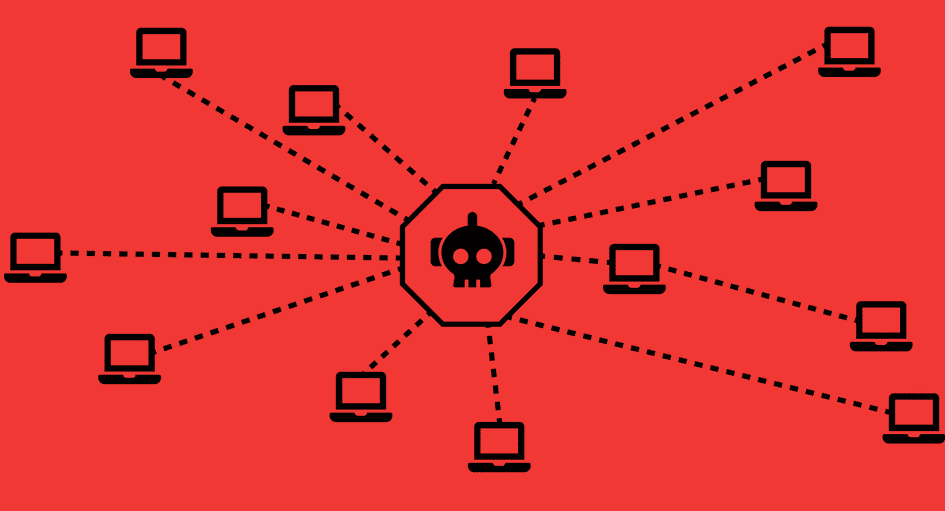What is a Botnet: Exploring the World of Cyber Criminal Networks
In today’s interconnected world, the threat of cyber attacks looms large, with botnets being one of the most powerful tools in the arsenal of cybercriminals. But what exactly is a botnet? How does it work? And what are the implications for individuals and businesses? In this comprehensive guide, we will delve into the depths of the botnet phenomenon, shedding light on its inner workings, the types of attacks it enables, and how we can protect ourselves from its nefarious activities.
Understanding Botnets
Defining Botnets
Botnets, short for robot networks, are vast networks of hijacked computer devices that cybercriminals use to carry out various scams and cyberattacks. These networks are formed by infecting individual devices, such as personal computers, servers, mobile devices, and internet of things (IoT) devices, with a common type of malware. Once infected, these devices become part of a network controlled by a single attacker or an attack group, also known as bot herders.
How Botnets Work
Botnets are designed to automate mass attacks, allowing cybercriminals to carry out larger and more efficient operations. One person or a small team of hackers can only carry out a limited number of actions on their local devices. However, by infecting a large number of additional machines, they can exponentially increase their capabilities.
Bot herders lead the collective of infected devices and issue remote commands to control their actions. These commands are often sent through a command and control (C&C) server or a peer-to-peer (P2P) network. The infected devices, also known as bots or zombies, mindlessly follow these commands, allowing the bot herder to orchestrate attacks, steal data, disrupt services, and more.
Building a Botnet
Stages of Building a Botnet
The process of building a botnet can be broken down into several stages: preparation, infection, and activation. In the preparation stage, hackers identify vulnerabilities in websites, applications, or human behavior to expose users to malware. Once exposed, users’ devices can be infected with malware that takes control of their devices. Finally, hackers activate the infected devices, organizing them into a network of bots that can be remotely managed.
Devices Vulnerable to Botnet Recruitment
Botnet recruitment can target any device that has access to an internet connection. Traditional computers like desktops and laptops running on Windows or macOS have long been popular targets. However, the rise of mobile devices has made them another prime target for botnet attacks. Additionally, internet infrastructure hardware, such as network routers and web servers, and IoT devices like smart home devices, in-vehicle infotainment systems, and wearable devices, are all vulnerable to botnet recruitment.
Controlling a Botnet
Command and Control Models
Your sentence is already in the active voice, so there’s no need for a revision. It effectively conveys the information about the two main models for controlling botnets.In the centralized model, a bot herder sets up a command and control (C&C) server and sends commands to the infected bots through a communication protocol like Internet Relay Chat (IRC). In contrast, the decentralized model relies on a P2P network, where infected devices communicate with each other to share commands and malware updates.
Uses and Types of Botnet Attacks
Motives for Building a Botnet
Botnet creators have various motives for building and using botnets. Some common motives include financial theft, information theft, sabotage of services, cryptocurrency scams, and selling access to other criminals. In many cases, cybercriminals seek to steal valuable information or cause trouble for others. Cybercriminals can also rent or sell botnets to others to carry out large-scale spam campaigns or other types of attacks.
Types of Botnet Attacks
People can use botnets as a weapon, but they often use them to execute secondary scams and cybercrimes on a massive scale.Some common types of botnet attacks include distributed denial-of-service (DDoS) attacks, phishing schemes, and brute force attacks. DDoS attacks overload servers with web traffic, causing them to crash. Phishing schemes involve tricking individuals into revealing sensitive information, while brute force attacks attempt to breach web accounts by force.
Protecting Yourself from Botnets
Tips for Protection
Protecting yourself from botnet attacks requires a proactive approach. Here are six tips to improve your defense against botnets:
-
Improve all user passwords for smart devices.
-
Avoid buying devices with weak security features.
-
Update admin settings and passwords across all your devices.
-
Be wary of email attachments and verify senders’ email addresses.
-
Avoid clicking on suspicious links and manually enter them in the address bar.
-
Install effective antivirus software to protect your devices.
Addressing IoT Device Vulnerabilities
The proliferation of IoT devices has made it easier for botnets to propagate. These devices often lack robust security features, making them attractive targets for cybercriminals. To address this issue, manufacturers and enterprises can incorporate stronger user authentication methods, secure remote firmware updates, secure boot processes, advanced behavioral analysis, and automation with machine learning and artificial intelligence into IoT devices.
Disrupting Botnet Attacks
Traditionally, security experts disrupted botnet attacks by targeting the command and control (C&C) servers.However, as botnets become more sophisticated and decentralized, takedown efforts have shifted to other approaches. These include identifying and removing botnet malware infections at the source, replicating P2P communication methods, and cracking down on monetary transactions related to botnet activities.
Conclusion
Botnets represent a significant threat in the realm of cybercrime, enabling attackers to carry out large-scale attacks and scams with relative ease.The sentence you provided is already in the active voice, so it doesn’t contribute to the passive voice percentage. However, if you have other sentences that are in the passive voice, please share them, and I can help you convert them into active voice.. By following best practices for device security, staying vigilant against phishing attempts, and promoting better security measures in IoT devices, we can mitigate the risks posed by botnets and preserve the integrity of our digital ecosystems.
